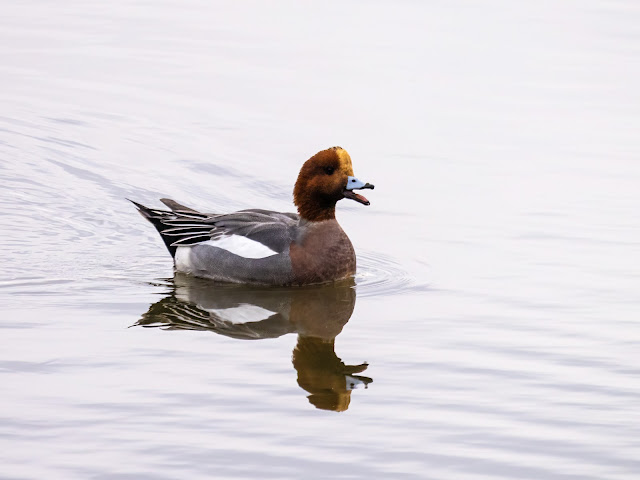This morning, I had a short bus and train journey to Leigh-on-Sea followed by a short walk to EWT Two Tree Island.
EWT Two Tree Island is situated adjacent to the internationally protected Thames Estuary and it is a winter refuge for a huge diversity and abundance of winter wildfowl (most notably Dark-bellied Brent Geese) and waders plus a wide range of breeding and migrant birds during the rest of the year.
EWT Two Tree Island was reclaimed from the sea in the 18th century when a seawall was built around the saltmarsh and it was originally used for farming. It is now managed as a nature reserve.
Approximately 4 miles of trails, which are a mixture of gravel and grass paths, provide access through the grasslands and scrub areas. At the end of the western section of the reserve is a bird hide which overlooks a lagoon which provides a valuable habitat for roosting and breeding water birds. The eastern section is part of Leigh National Nature Reserve where the saltmarsh is one of the best surviving in the Thames Estuary.
I spent around 3 hours in the western section of the site including the hide overlooking the lagoon and the seawall overlooking Hadleigh Ray, an inlet of the River Thames leading to Benfleet Creek.
It was very cold, 1°C to 3°C, and dull, grey and overcast, making it very difficult for photography. However, I still had an excellent visit and added 5 species to my 2023 UK year list: Knot, Bar-tailed Godwit, Kingfisher, Skylark, Rock Pipit
The main highlights of my visit were the concentration of waders on the rising tide and an unexpected Kingfisher perched up on a moored boat between the cockle sheds and Leigh-on-Sea train station.
The most notable sightings from my visit were as follows: Dark-bellied Brent Goose (c.400), Knot (c.1000 at least), Dunlin (c.300 at least), Bar-tailed Godwit (c.100), Common Redshank (c.25), Avocet (c.25), Lapwing (c.20), Curlew (c.10), Grey Plover (c.10), Ringed Plover (c.10), Oystercatcher (4), Common Snipe (3), Wigeon (c.400 at least), Teal (c.200 at least), Shoveler (16), Shelduck (c.10), Mallard (c.10), Cormorant (2), Little Grebe (5), Moorhen (4), Coot (4), Mute Swan (2), Black headed Gull (+), Herring Gull (+), Common Gull (5), Kingfisher (1), Rock Pipit (1), Skylark (2), Fieldfare (4)
Here are a few photos from my visit:
💚🦆 🦉🦋🐝🦊🦡🌼 🌳💚
Stay safe, stay well, stay strong, stay connected with nature





No comments:
Post a Comment
If you feel like commenting on my blog, you can contact me by completing the comment form below. I will respond to all comments and enquiries and constructive criticism will always be welcomed.